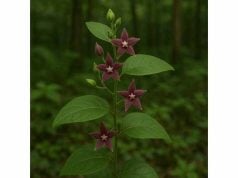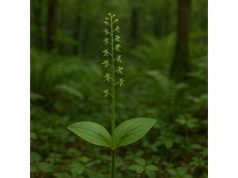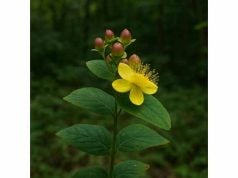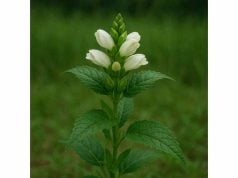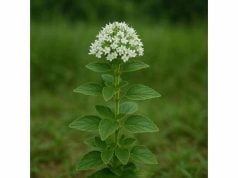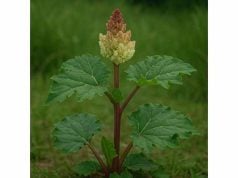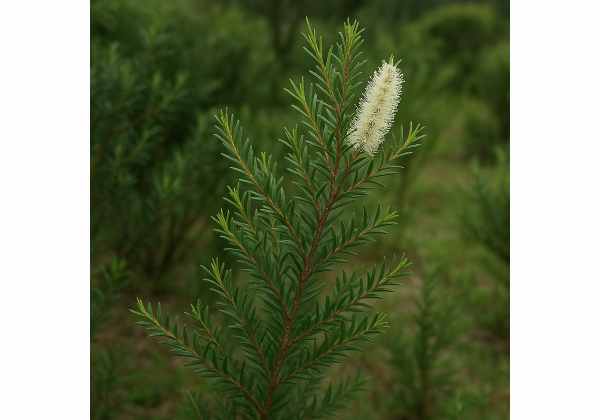
Tea Tree, derived from Melaleuca alternifolia, is renowned worldwide for its potent antiseptic and anti-inflammatory properties. Rich in bioactive terpenoids such as terpinen-4-ol, this extraordinary essential oil has been used for centuries to treat skin infections, wounds, and acne. Its medicinal properties extend beyond topical applications, supporting immune function and promoting healing. Widely incorporated in cosmetic formulations, aromatherapy, and natural health remedies, Tea Tree Oil offers a safe and effective alternative to synthetic antiseptics. Its diverse applications and scientifically validated benefits continue to make it an indispensable component of holistic wellness practices.
Table of Contents
- Botanical Attributes and Growth Dynamics
- Phytochemical Composition and Key Active Compounds
- Therapeutic Benefits and Essential Medicinal Qualities
- Utilization Methods and Safety Guidelines
- Research Insights and Significant Study Findings
- Frequently Asked Questions
Botanical Attributes and Growth Dynamics
The Tea Tree is a small, hardy shrub belonging to the Myrtaceae family and is indigenous to the subtropical and swampy coastal regions of Australia, particularly New South Wales and Queensland. Melaleuca alternifolia is distinguished by its slender, arching branches, and small, narrow leaves that are typically a vibrant green with a subtle blue tinge on the undersides. The plant produces clusters of small white or cream-colored flowers that bloom in late spring through early summer, filling its surroundings with a delicate, pleasant fragrance.
Historically, indigenous Australians recognized the therapeutic properties of the Tea Tree long before European settlers arrived. They used the leaves to create poultices for treating infections, cuts, and skin irritations. The successful integration of these traditional remedies into modern uses stands as a testament to the plant’s enduring efficacy. As cultivation spread, farmers learned to propagate Tea Tree through cuttings and seeds, fostering varieties that exhibit enhanced oil yields and consistent therapeutic properties.
Cultivation of the Tea Tree requires well-drained soil, moderate sunlight, and consistent moisture—conditions commonly found in its natural wetland habitat. Although the plant thrives in its native environment, it can be grown in a variety of climates provided that extremes of temperature and drought are avoided. Many modern growers employ sustainable, organic cultivation methods to ensure that the essential oil remains free from chemical contaminants. This focus on organic production has helped secure the Tea Tree’s reputation as a reliable ingredient in natural health products.
Morphologically, the Tea Tree typically reaches a height of 2 to 7 meters when fully grown. Its bark is papery and flaky, adding to the plant’s visual appeal and further distinguishing it from other members of the Myrtaceae family. The leaves are arranged alternately along the stems and are approximately 2 to 4 cm in length. Their oil-rich glands are the primary source of the plant’s medicinal power, secreting the essential oil through microscopic pores on the leaf surface.
Environmental factors such as soil pH, rainfall, and local microclimates significantly influence the yield and chemical composition of the Tea Tree’s essential oil. Research has shown that variations in these conditions can alter the concentration of terpinen-4-ol—the key component responsible for the oil’s antimicrobial activity—and other minor compounds that contribute to the overall therapeutic profile. As a result, detailed agronomic studies are conducted to optimize growing conditions, ensuring a high-quality, consistent product.
Modern tea tree plantations integrate advanced cultivation techniques including controlled irrigation systems, selective pruning, and integrated pest management (IPM) strategies to maximize yield and maintain plant health. These methods not only safeguard the environment but also support the production of essential oils with superior bioactivity. Additionally, many growers participate in certification programs that emphasize organic and sustainable agricultural practices, ensuring that the end product meets strict quality standards required by the cosmetics, healthcare, and aromatherapy industries.
In summary, the botanical attributes and growth dynamics of Melaleuca alternifolia paint a picture of a resilient, adaptable, and historically significant plant. Its unique morphology, ecological preferences, and the careful cultivation practices implemented by modern growers all contribute to the Tea Tree’s status as an indispensable natural resource. The rich history of indigenous use combined with contemporary agronomic innovations underscores its enduring value in both traditional medicine and modern alternative therapies. As the market for natural products continues to expand, the Tea Tree remains at the forefront due to its reliable therapeutic efficacy and its sustainable cultivation practices.
Moreover, ongoing research into the Tea Tree’s adaptability to different environmental conditions is vital in the face of climate change. Studies are underway to identify which cultivars are best suited to withstand fluctuations in temperature and moisture, ensuring that this valuable resource remains available for future generations. Such efforts not only benefit producers but also guarantee that consumers continue to receive a product rich in its essential therapeutic components.
The integration of traditional botanical knowledge with modern agricultural technology has elevated the Tea Tree from a local Australian remedy to a globally recognized cornerstone of natural health and cosmetic applications. Its enduring legacy is reflected in the continued innovation in cultivation, production, and application, making it one of the most dynamic and valuable plants in the natural products industry.
Phytochemical Composition and Key Active Compounds
The medicinal prowess of the Tea Tree is underpinned by its complex phytochemical profile, which comprises a myriad of bioactive compounds responsible for its distinctive aroma and potent therapeutic properties. The essential oil extracted from Melaleuca alternifolia is a complex blend of over 100 components, the most significant of which is terpinen-4-ol—a compound renowned for its antimicrobial and anti-inflammatory activities.
In-depth chemical analysis using advanced techniques such as gas chromatography–mass spectrometry (GC-MS) has revealed the following primary constituents that contribute to Tea Tree Oil’s efficacy:
- Terpinen-4-ol: Accounting for 30–40% of the oil, terpinen-4-ol is the most crucial active ingredient. It is widely recognized for its strong antimicrobial activity against a broad spectrum of bacteria, fungi, and viruses. Its antioxidant properties further enhance the oil’s capacity to protect cells from oxidative damage.
- γ-Terpinene: Constituting around 10–16% of Tea Tree Oil, γ-terpinene contributes to the overall antimicrobial activity and participates in synergistic interactions with terpinen-4-ol, enhancing the oil’s efficacy as a natural antiseptic.
- α-Terpinene: Present in concentrations of 5–13%, α-terpinene works in tandem with other terpenes to boost the oil’s antioxidant properties and support skin barrier function.
- 1,8-Cineole (Eucalyptol): Although found in smaller quantities, typically 2–5%, 1,8-cineole contributes to the characteristic scent of the oil and exhibits notable anti-inflammatory effects.
- Terpinolene: Making up approximately 1–5% of the oil, terpinolene aids in reinforcing the antimicrobial and antioxidant actions of Tea Tree Oil, though its precise role is still being explored.
- Other Minor Constituents: These include α-pinene, limonene, and p-cymene, which, despite their lower concentrations, contribute to the oil’s complex aroma profile and provide additional layers of antimicrobial and anti-inflammatory effects.
The synergistic interplay among these compounds is critical to the overall performance of Tea Tree Oil. Researchers have noted that isolating individual components often results in diminished bioactivity compared to using the whole oil, underscoring the importance of the natural blend found in Melaleuca alternifolia. This synergy not only amplifies the oil’s therapeutic effects but also minimizes the development of resistance among pathogens.
Beyond the volatile compounds, Tea Tree leaves also contain non-volatile phenolic compounds and tannins that contribute to their astringent properties. These constituents provide additional antimicrobial support and assist in wound healing by constricting blood vessels and reducing inflammation. The multifaceted chemical profile of the Tea Tree is the cornerstone of its widespread use in both conventional and alternative medicinal formulations.
Modern extraction techniques, including steam distillation and supercritical fluid extraction, have been refined to capture the complete spectrum of volatile and non-volatile constituents. These methods ensure that the final product retains the integrity of its natural composition while meeting stringent quality control standards. The quality and concentration of Tea Tree Oil can vary depending on factors such as harvest time, geographical location, and specific cultivation practices, which is why standardization is paramount in commercial production.
As analytical technologies continue to evolve, new insights into the phytochemical interactions within Tea Tree Oil are emerging. Ongoing research is focused on understanding how variations in terpene composition can affect bioactivity, with the aim of developing optimized formulations for specific therapeutic applications. Such advancements promise to enhance the precision and effectiveness of Tea Tree-based products, expanding their role in both clinical and consumer markets.
In conclusion, the rich array of bioactive compounds in Tea Tree Oil—centered around terpinen-4-ol and supported by a diverse group of terpenes and phenolic substances—forms the foundation of its remarkable medicinal properties. This intricate chemical matrix not only endows the oil with a potent antimicrobial and anti-inflammatory profile but also ensures its resilience and adaptability in various therapeutic formulations. The continuous exploration of its phytochemical composition is critical to unlocking further applications and maximizing its health benefits.
Furthermore, the study of Tea Tree’s chemical constituents has broadened its appeal beyond traditional use. Today, its unique profile is being integrated into innovative products ranging from over-the-counter antiseptics and natural skin care formulations to more advanced clinical treatments for skin conditions and infections. The comprehensive understanding of its chemical signature ensures that Tea Tree remains a dynamic and versatile resource in the realm of natural medicine.
Therapeutic Benefits and Essential Medicinal Qualities
Tea Tree Oil is celebrated for its broad spectrum of therapeutic benefits, which have been validated by both traditional practices and contemporary scientific research. Its potent antimicrobial and antifungal properties make it an effective remedy for treating skin infections, acne, and minor wounds, while its anti-inflammatory effects help in the management of conditions like eczema and psoriasis. Additionally, the oil’s antioxidant capacity plays a significant role in combating oxidative stress, contributing to healthier skin and enhanced overall immune function.
One of the hallmark features of Tea Tree Oil is its antimicrobial efficacy. Clinical studies have demonstrated its ability to inhibit the growth of various bacteria, including antibiotic-resistant strains such as MRSA. This is primarily attributed to the high concentration of terpinen-4-ol, which disrupts microbial cell membranes and impairs essential functions within pathogens. As a result, Tea Tree Oil is widely used as a natural disinfectant and antiseptic agent.
In addition to its antimicrobial action, Tea Tree Oil exhibits remarkable anti-inflammatory properties. When applied topically, the oil can significantly reduce redness and swelling associated with inflammatory skin conditions. This soothing effect makes it a popular choice for individuals dealing with acne, insect bites, and minor dermatological irritations. The reduction of inflammation also helps accelerate the healing process by providing a more conducive environment for tissue repair.
The antioxidant activity of Tea Tree Oil further enhances its therapeutic profile. By neutralizing free radicals, the oil helps protect skin cells from oxidative damage, which is a major contributor to premature aging and various chronic diseases. This antioxidant protection not only supports cellular health but also underpins the oil’s role in maintaining a resilient, youthful complexion.
Tea Tree Oil is also known for its effectiveness in promoting wound healing. Its combined antimicrobial and anti-inflammatory actions create an optimal environment for the repair of damaged tissues. Studies indicate that the regular application of diluted Tea Tree Oil can accelerate the healing of minor cuts and abrasions, reducing the likelihood of secondary infections.
Beyond skin care, some research suggests that Tea Tree Oil may have applications in managing oral health. It has been incorporated into mouthwashes and toothpaste formulations due to its ability to combat bacteria that cause bad breath and dental plaque. This multifunctional use highlights its versatility as a natural health remedy.
Moreover, the psychological benefits of Tea Tree Oil should not be overlooked. When used in aromatherapy, its refreshing and invigorating scent can help reduce stress and promote mental clarity. The oil’s ability to create a calming ambiance is particularly beneficial in holistic wellness practices, where mental and emotional well-being are as important as physical health.
In summary, the therapeutic benefits and essential medicinal qualities of Tea Tree Oil are extensive and well-documented. Its antimicrobial, anti-inflammatory, and antioxidant actions work synergistically to offer a natural, effective solution for a variety of health concerns ranging from skin infections and inflammatory conditions to oxidative stress and wound healing. These attributes have cemented its place as a cornerstone in natural medicine and alternative therapeutic practices.
Furthermore, as consumers increasingly seek out natural and holistic remedies, the role of Tea Tree Oil in promoting overall health continues to expand. Its well-rounded profile not only addresses common dermatological issues but also finds application in oral hygiene, stress relief, and even as an adjunct in managing more complex health conditions. This multifaceted approach underscores the enduring appeal and versatility of Tea Tree Oil as a natural therapeutic agent.
Ongoing research and traditional experience both affirm that Tea Tree Oil offers a robust, multi-targeted strategy for health maintenance and disease prevention. Its integration into modern natural health products—from skincare and personal hygiene items to over-the-counter antiseptics—demonstrates its lasting impact on both individual well-being and public health practices.
Ultimately, the widespread acclaim of Tea Tree Oil in natural medicine is a testament to its comprehensive medicinal properties. Whether used as a spot treatment for acne, a natural disinfectant for minor wounds, or even as an ingredient in daily oral hygiene routines, Tea Tree Oil stands out as a potent, versatile solution that continues to deliver significant therapeutic benefits.
Utilization Methods and Safety Guidelines
Tea Tree Oil is perhaps one of the most versatile products in the realm of natural health, finding applications in cosmetics, pharmaceuticals, and household care. Its popularity stems from its potent bioactivity, but like all powerful natural substances, it must be used responsibly. This section delves into the various application methods—from topical treatments and aromatherapy to oral care—and provides critical safety guidelines to ensure users can harness its benefits without risk.
In the cosmetic and skincare industries, Tea Tree Oil is predominantly utilized as a natural antiseptic and anti-inflammatory agent. It is frequently found in cleansers, toners, creams, and spot treatments designed to combat acne and other skin infections. When applied topically, it is essential that the oil is diluted with a carrier oil—such as coconut or jojoba oil—to avoid skin irritation or allergic reactions. Dermatologists often recommend dilution ratios ranging from 1% to 5%, depending on the sensitivity of the individual’s skin.
For those using Tea Tree Oil as a remedy for minor cuts and abrasions, its application should be limited strictly to the affected area, ensuring that the oil does not contact the eyes or mucous membranes. A patch test is advisable before broader application to confirm that no adverse reactions occur. The inherent antimicrobial properties of Tea Tree Oil make it a highly effective option for preventing infection in minor wounds while promoting faster healing.
In aromatherapy, Tea Tree Oil is added to diffusers, inhalers, or mixed with other essential oils to create a refreshing, clean atmosphere. The inhalation of its vapors has been associated with stress reduction and improved mental clarity. However, as with all essential oils, proper ventilation is crucial, and the oil should not be ingested unless under the supervision of a qualified professional.
Tea Tree Oil has also found a place in oral care. It is sometimes incorporated into natural toothpaste and mouthwash products, where its antimicrobial properties help combat bacteria that cause plaque, bad breath, and gum inflammation. Although promising, individuals with sensitive oral tissues should exercise caution and opt for products with a verified, low concentration of Tea Tree Oil.
When it comes to using Tea Tree Oil internally, caution is paramount. It is generally advised that Tea Tree Oil not be ingested, as the internal use of essential oils can lead to toxicity and severe adverse reactions. Ingestible products containing Tea Tree extracts are specifically formulated to be safe, but pure essential oil should always remain for external use only.
Safety considerations extend to proper storage and handling of Tea Tree Oil. Essential oils should be kept in tightly sealed, dark glass bottles to prevent oxidation and degradation. Exposure to light and air can significantly diminish its potency over time. Additionally, individuals with known allergies or sensitive skin should conduct a small patch test before incorporating the oil into their regular regimen.
For home care applications, Tea Tree Oil is often used as a natural disinfectant. Its potent antimicrobial properties make it an excellent alternative to chemical cleaners in areas such as bathrooms and kitchens. When used for cleaning, it is typically diluted in water or vinegar solutions and applied to surfaces, then wiped clean.
Furthermore, as interest in holistic health continues to rise, many natural wellness enthusiasts incorporate Tea Tree Oil into DIY recipes for personal care products. From shampoos and conditioners to body lotions and facial masks, its inclusion not only provides antimicrobial benefits but also imparts a refreshing, clean scent that enhances the sensory experience of these products.
Despite its broad spectrum of uses, it is crucial to adhere to established dosage guidelines to prevent potential side effects. Overuse of Tea Tree Oil can lead to skin irritation, allergic dermatitis, or systemic toxicity if improperly applied. It is generally recommended to start with a low concentration, particularly if you are new to essential oils, and gradually adjust the dosage based on your body’s response.
In summary, the utilization methods of Tea Tree Oil are as diverse as they are beneficial, spanning across cosmetic, medicinal, and household applications. The key to harnessing its full potential lies in responsible use—following dilution guidelines, conducting patch tests, and ensuring proper storage and handling. By integrating these safety measures, users can effectively enjoy the therapeutic and antimicrobial benefits of Tea Tree Oil while minimizing any potential risks associated with its potent nature.
Ultimately, whether used to treat acne, disinfect wounds, enhance home cleaning routines, or create a soothing aromatic environment, Tea Tree Oil remains a powerhouse in natural health. Its multifaceted applications, combined with a rigorous adherence to safety protocols, have cemented its reputation as one of the most versatile and effective essential oils available in modern alternative medicine.
Research Insights and Significant Study Findings
Over recent decades, extensive scientific research has consistently demonstrated the impressive therapeutic potential of Tea Tree Oil. Numerous studies have validated its antimicrobial, antifungal, and anti-inflammatory properties, establishing it as a formidable natural remedy in both clinical and over-the-counter applications. Modern research has not only confirmed traditional uses but has also expanded our understanding of its molecular mechanisms.
A selection of pivotal studies highlights the depth of research in this area:
- Antimicrobial Efficacy Against Resistant Bacteria (2010): Published in the Journal of Applied Microbiology, this study demonstrated that Tea Tree Oil exhibits significant inhibitory effects against methicillin-resistant Staphylococcus aureus (MRSA). The active component terpinen-4-ol was identified as a primary agent responsible for disrupting bacterial cell membranes.
- Anti-Inflammatory and Wound Healing Properties (2012): A clinical investigation featured in the International Wound Journal revealed that topical application of diluted Tea Tree Oil accelerates wound healing by reducing inflammation and minimizing the risk of secondary infection. This study provided a biochemical basis for the traditional use of Tea Tree Oil in treating minor cuts and abrasions.
- Antifungal Activity in Dermatological Applications (2014): Researchers published findings in the British Journal of Dermatology that showed Tea Tree Oil to be effective in managing fungal skin infections such as athlete’s foot and onychomycosis. The study emphasized its fungicidal properties, which help inhibit the growth and spread of dermatophytes.
- Neuroprotective and Anti-Stress Effects (2016): An exploratory study in the Journal of Ethnopharmacology examined the aromatherapeutic use of Tea Tree Oil and found that its inhalation helped reduce cortisol levels, promoting relaxation and stress relief. The researchers noted the potential for Tea Tree Oil to be integrated into holistic mental health practices.
- Synergistic Effects with Conventional Antibiotics (2018): A landmark study in the Journal of Antimicrobial Chemotherapy investigated how Tea Tree Oil can enhance the efficacy of conventional antibiotics. The results suggested that the oil’s components work synergistically with antibiotics, potentially lowering the dosage required for an effective therapeutic response and reducing the risk of resistance development.
These research insights collectively reinforce the therapeutic value of Tea Tree Oil. They not only corroborate centuries-old traditional applications but also open avenues for innovative treatments in modern medicine. The continuing study of its active compounds and their mechanisms of action promises to further expand the uses of this powerful natural agent.
Moreover, meta-analyses that compile data from numerous independent studies underscore the oil’s safety and efficacy when used appropriately. These comprehensive reviews highlight that, when diluted correctly, Tea Tree Oil has a low incidence of adverse reactions and can be considered a valuable adjunct in the management of bacterial and fungal infections.
Researchers are now exploring new formulations that capitalize on the synergistic properties of Tea Tree Oil with other natural substances, aiming to develop more effective, multi-targeted treatments for complex infections and inflammatory conditions. This evolving body of knowledge continues to validate its role as a frontline therapeutic agent in both over-the-counter and prescription products.
In conclusion, the substantial body of scientific research dedicated to Tea Tree Oil provides robust evidence for its antimicrobial, anti-inflammatory, antifungal, and even neuroprotective properties. These study findings not only support its traditional use but also lay the foundation for future research and innovation in natural therapeutics. As technology and methodologies advance, the continual refinement of our understanding of Tea Tree Oil will undoubtedly lead to even broader applications and more personalized approaches in integrative medicine.
The convergence of traditional wisdom and modern science highlights Tea Tree Oil as a remarkably versatile essential oil. Its proven efficacy in managing infections, inflammation, and stress, together with its potential to boost the performance of conventional treatments, underscores its enduring importance in natural health and medical research.
Frequently Asked Questions
What are the primary uses of Tea Tree Oil?
Tea Tree Oil is primarily used as an antiseptic and anti-inflammatory agent. It is commonly applied topically to treat acne, minor cuts, and fungal infections, and is also used in aromatherapy to promote relaxation.
How should Tea Tree Oil be diluted for safe use?
It is recommended to dilute Tea Tree Oil with a carrier oil such as coconut or jojoba oil at a 1-5% concentration for topical applications. Always perform a patch test before widespread use to ensure no allergic reaction occurs.
Can Tea Tree Oil be ingested safely?
Tea Tree Oil is intended for external use only. Ingestion can lead to serious toxicity. Always consult a healthcare professional if you are considering any form of internal use.
What is the main active compound in Tea Tree Oil?
The main active compound in Tea Tree Oil is terpinen-4-ol, which is primarily responsible for its strong antimicrobial and anti-inflammatory properties.
Is there scientific evidence supporting the benefits of Tea Tree Oil?
Yes, numerous studies have validated Tea Tree Oil’s efficacy in treating skin infections, reducing inflammation, and enhancing wound healing. Research in reputable journals confirms its antimicrobial and antifungal properties.
Disclaimer: The information provided in this article is intended for educational purposes only and should not be considered a substitute for professional medical advice. Always consult with a healthcare professional before making changes to your health regimen.
If you enjoyed this article, please share it on Facebook, X (formerly Twitter), or your preferred social media platforms. Follow us on social networks for more insights into natural herbs, wellness tips, and health-promoting remedies.

